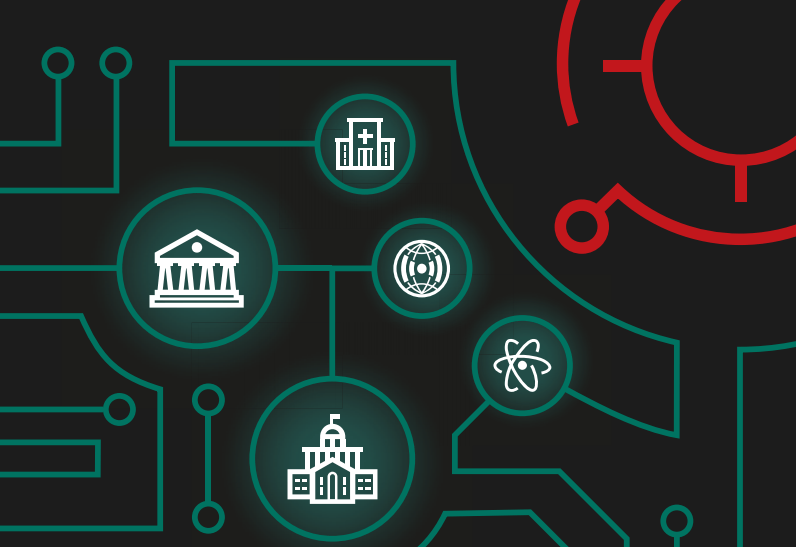
The landscape in 2017
2017 was one of the most intense in terms of incidents affecting the information security of industrial systems. Security researchers discovered and reported hundreds of new vulnerabilities, warned of new threat vectors in ICS and technological processes, provided data on accidental infections of industrial systems and detected targeted attacks (for example, Shamoon 2.0/StoneDrill). And, for the first time since Stuxnet, discovered a malicious toolset some call a ‘cyber-weapon’ targeting physical systems: CrashOverride/Industroyer.
However, the most significant threat to industrial systems in 2017 was encryption ransomware attacks. According to a Kaspersky Lab ICS CERT report, in the first half of the year experts discovered encryption ransomware belonging to 33 different families. Numerous attacks were blocked, in 63 countries across the world. The WannaCry and ExPetr destructive ransomware attacks appear to have changed forever the attitude of industrial enterprises to the problem of protecting essential production systems.
What can we expect in 2018?
- A rise in general and accidental malware infections. With few exceptions, cybercriminal groups have not yet discovered simple and reliable schemes for monetizing attacks on industrial information systems. Accidental infections and incidents in industrial networks caused by ‘normal’ (general) malicious code aimed at a more traditional cybercriminal target such as the corporate networks, will continue in 2018. At the same time, we are likely to see such situations result in more severe consequences for industrial environments. The problem of regularly updating software in industrial systems in line with the corporate network remains unresolved, despite repeated warnings from the security community.
- Increased risk of targeted ransomware attacks. The WannaCry and ExPetr attacks taught both security experts and cybercriminals that operational technology (OT) systems are more vulnerable to attack than IT systems, and are often exposed to access through the Internet. Moreover, the damage caused by malware can exceed that in the corresponding corporate network, and ‘firefighting’ in the case of OT is much more difficult. Industrial companies have demonstrated how inefficient their organization and staff can be when it comes to cyberattacks on their OT infrastructure. All of these factors make industrial systems a desirable target for ransomware attacks.
- More incidents of industrial cyberespionage. The growing threat of organized ransomware attacks against industrial companies could trigger development of another, related area of cybercrime: the theft of industrial information systems data to be used afterwards for the preparation and implementation of targeted (including ransomware) attacks.
- New underground market activity focused on attack services and hacking tools. In recent years, we have seen growing demand on the black market for zero day exploits targeting ICS. This tells us that criminals are working on targeted attack campaigns. We expect to see this interest increase in 2018, stimulating the growth of the black markets and the appearance of new segments focused on ICS configuration data and ICS credentials stolen from industrial companies and, possibly, botnets with ‘industrial’ nodes offerings. Design and implementation of advanced cyberattacks targeting physical objects and systems requires an expert knowledge of ICS and relevant industries. Demand is expected to drive growth in areas such as ‘malware-as-a-service’, ‘attack-vector-design-as-a-service’, ‘attack-campaign-as-a-service’ and more.
- New types of malware and malicious tools. We will probably see new malware being used to target industrial networks and assets, with features including stealth and the ability to remain inactive in the IT network to avoid detection, only activating in less secure OT infrastructure. Another possibility is the appearance of ransomware targeting lower-level ICS devices and physical assets (pumps, power switches, etc.).
- Criminals will take advantage of ICS threat analyses published by security vendors. Researchers have done a good job finding and making public various attack vectors on industrial assets and infrastructures and analyzing the malicious toolsets found. However, this could also provide criminals with new opportunities. For example, the CrashOverride/Industroyer toolset disclosure could inspire hacktivists to run denial-of-service attacks on power and energy utilities; or criminals may targeted ransomware and may even invent monetizing schemes for blackouts. The PLC (programmable logic controller) worm concept could inspire criminals to create real world malicious worms; while others could try to implement malware using one of standard languages for programming PLCs. Criminals also could recreate the concept of infecting the PLC itself. Both these types of malware could remain undetected by existing security solutions.
- Changes in national regulation. In 2018, a number of different cybersecurity regulations for industrial systems will need to be implemented. For example, those with critical infrastructures and industrial assets facilities will be compelled to do more security assessments. This will definitely increase protection and awareness. Thanks to that, we will probably see some new vulnerabilities found and threats disclosed.
- Growing availability of, and investment in industrial cyber insurance. Industrial cyber-risk insurance is becoming an integral part of risk management for industrial enterprises. Previously, the risk of a cybersecurity incident was excluded from insurance contracts – just like the risk of a terrorist attack. But the situation is changing, with new initiatives introduced by both cybersecurity and insurance companies. In 2018, this will increase the number of audits/assessments and incident responses undertaken, raising cybersecurity awareness among the industrial facility’s leaders and operators.





















Threat Predictions for Industrial Security in 2018